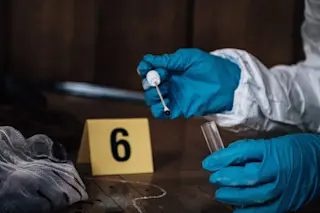(Inside Science) — According to Senior U.S. District Judge Jed Rakoff, at the Southern District of New York, “Forensic science continues to be routinely admitted by the courts, both state and federal, even though considerable doubts have now been raised as to whether forensic science really is science at all, and whether it is reliable and valid.”
As part of the National Commission on Forensic Science, Rakoff contributed to a 2016 report noting some serious flaws in the way the justice system uses forensic science. He says that times have changed, and science has changed, but some judges aren’t changing as scientific understanding advances.
“DNA is, with very few exceptions, well-established as a science, but at the other extreme, things like bite mark analysis and hair testing analysis have been called severely into question and their error rates appear to be quite high,” said Rakoff. “So, in 1993, the federal ...














